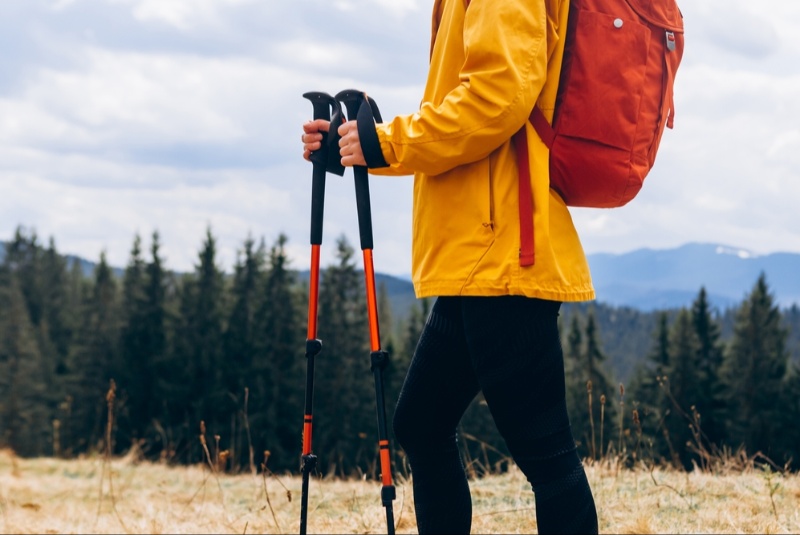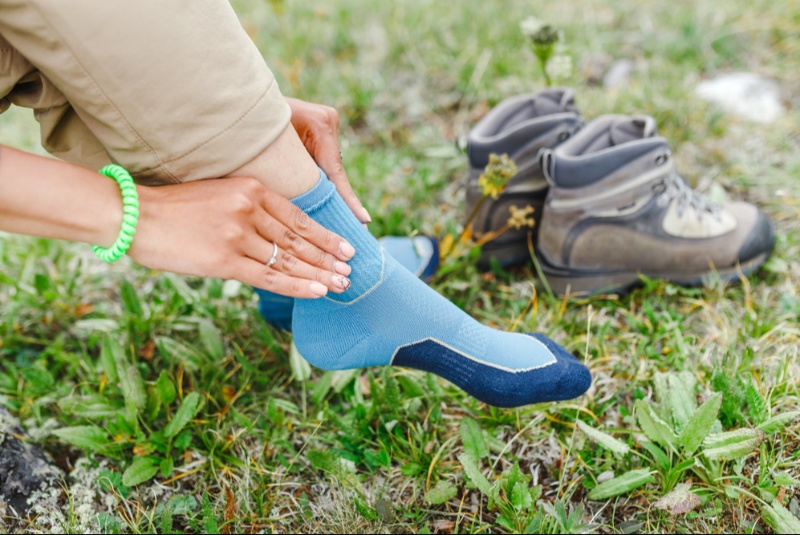Trekking poles are essential tools for hikers, providing stability, reducing strain on joints, and enhancing balance on uneven terrain. Selecting the right pair of trekking poles can make a significant difference in your hiking experience. This comprehensive guide offers essential tips and insights to help you choose the perfect pair of trekking poles for your summer hikes, ensuring you enjoy comfort, safety, and efficiency on the trails.
Understanding the Benefits of Trekking Poles
Trekking poles offer numerous benefits, making them a valuable addition to your hiking gear. They help distribute weight evenly, reducing the impact on your knees and legs, especially during descents. Poles enhance balance on uneven terrain, crossing streams, or navigating slippery surfaces. They also help maintain a steady rhythm, increasing your hiking speed and endurance. Understanding these benefits ensures you recognize the importance of trekking poles and their impact on your hiking performance and comfort.
Choosing Between Adjustable and Fixed-Length Poles
Trekking poles come in two main types: adjustable and fixed-length. Adjustable poles can be extended or shortened to suit different terrains and personal preferences. They are versatile and convenient for various hiking conditions. Fixed-length poles are lighter and more robust, offering simplicity and durability. Consider your hiking style and the terrain you typically encounter when choosing between adjustable and fixed-length poles. This decision ensures you select poles that match your needs and enhance your hiking experience.
Evaluating Pole Materials
The material of trekking poles affects their weight, durability, and cost. Common materials include aluminum and carbon fiber. Aluminum poles are durable, affordable, and slightly heavier, making them suitable for rugged terrain and heavy use. Carbon fiber poles are lightweight, reducing fatigue on long hikes, but they are more expensive and can be less durable under heavy impact. Evaluating pole materials ensures you choose a pair that balances weight, durability, and cost, aligning with your hiking needs and budget.
Considering Locking Mechanisms
The locking mechanism of adjustable trekking poles is crucial for stability and ease of use. There are various types, including twist locks, lever locks, and push-button locks. Twist locks are simple and lightweight but can be challenging to adjust with wet or gloved hands. Lever locks are easy to use and provide a secure hold, even in harsh conditions. Push-button locks offer quick adjustments but may be less durable. Considering locking mechanisms ensures you choose poles that are easy to adjust and reliable on the trail.
Assessing Grip and Strap Design
The grip and strap design of trekking poles significantly impact comfort and control. Grips are commonly made from materials like cork, foam, and rubber. Cork grips are comfortable, absorb sweat, and conform to your hands over time. Foam grips provide excellent cushioning and moisture absorption, while rubber grips offer durability and a firm hold in wet conditions. Straps help distribute weight and reduce hand fatigue. Adjustable straps with padded designs enhance comfort and prevent blisters. Assessing grip and strap design ensures you select poles that provide a comfortable and secure grip throughout your hike.

Evaluating Shock Absorption Features
Shock absorption features can reduce strain on your joints and muscles, enhancing comfort on long hikes. Some trekking poles come with built-in shock absorbers, such as spring-loaded mechanisms, which absorb impact and reduce vibration. This feature is particularly beneficial for hikers with joint issues or those carrying heavy loads. However, shock absorbers add weight and cost to the poles. Evaluating shock absorption features ensures you choose poles that provide the desired level of comfort and support for your hiking style.
Considering Pole Tips and Baskets
The tips and baskets of trekking poles affect their performance on different terrains. Carbide or tungsten tips offer excellent traction and durability on rocky surfaces. Rubber tips are ideal for paved trails and protect delicate surfaces. Interchangeable tips provide versatility for various hiking conditions. Baskets prevent poles from sinking into soft ground, snow, or mud. Small baskets are suitable for summer hikes, while larger snow baskets are ideal for winter conditions. Considering pole tips and baskets ensures your poles perform well on the terrain you encounter.
Assessing Weight and Packability
The weight and packability of trekking poles are important factors for convenience and ease of transport. Lightweight poles reduce fatigue and make long hikes more manageable. Carbon fiber poles are typically the lightest option. For packability, consider collapsible or foldable poles that can be easily stowed in or attached to your backpack. These poles are ideal for travel and hikes that require scrambling or sections where poles are unnecessary. Assessing weight and packability ensures you choose poles that are easy to carry and suit your hiking adventures.
Setting a Budget
Setting a budget is a crucial step in the trekking pole purchasing process. Trekking poles range from budget-friendly models to high-end options with advanced features. Determine how much you are willing to spend and prioritize features that are most important to you, such as material, adjustability, and grip design. While it’s tempting to choose the cheapest option, investing in higher-quality poles can provide better performance, durability, and comfort. Setting a clear budget helps narrow down your options and ensures you get the best value for your money.
Reading Reviews and Seeking Recommendations
Reading reviews and seeking recommendations from other hikers can provide valuable insights into the performance and reliability of different trekking pole models. Look for detailed reviews that discuss durability, comfort, ease of adjustment, and overall performance. Professional reviews from trusted sources and consumer reports can offer in-depth analysis and comparisons. Additionally, seeking recommendations from friends, family, or online hiking communities can help you identify popular and well-regarded models. Gathering information from multiple sources ensures you make an informed decision based on real-world experiences and expert opinions.
Testing Before Your Hike
If possible, test different trekking poles in-store before making a purchase. Testing allows you to evaluate comfort, grip, adjustability, and weight firsthand. Pay attention to how the poles feel in your hands, the ease of adjusting the length, and the stability of the locking mechanisms. If in-store testing is not an option, look for retailers with generous return policies that allow you to try the poles at home and return them if they don’t meet your expectations. Testing before your hike ensures you choose poles that fit your needs and preferences.
Maintaining Your Trekking Poles
Proper maintenance is essential for extending the lifespan and performance of your trekking poles. After each hike, clean the poles with water and a mild detergent to remove dirt and debris. Dry them thoroughly to prevent corrosion. Regularly check the locking mechanisms and tighten any loose components. Store the poles in a cool, dry place to avoid damage from extreme temperatures or humidity. Maintaining your trekking poles ensures they remain in optimal condition, providing reliable support and performance for your hikes.
Choosing the perfect pair of trekking poles for your summer hikes involves understanding their benefits, evaluating key features such as adjustability, materials, grips, and locking mechanisms, and considering factors like weight, packability, and budget. By reading reviews, seeking recommendations, and testing different models, you can make an informed decision that ensures you select trekking poles that enhance your hiking experience. Investing in high-quality trekking poles provides long-term value, comfort, and support, making your hikes more enjoyable and safe. Use this guide to navigate the trekking pole market confidently and find the perfect pair for your outdoor adventures.




